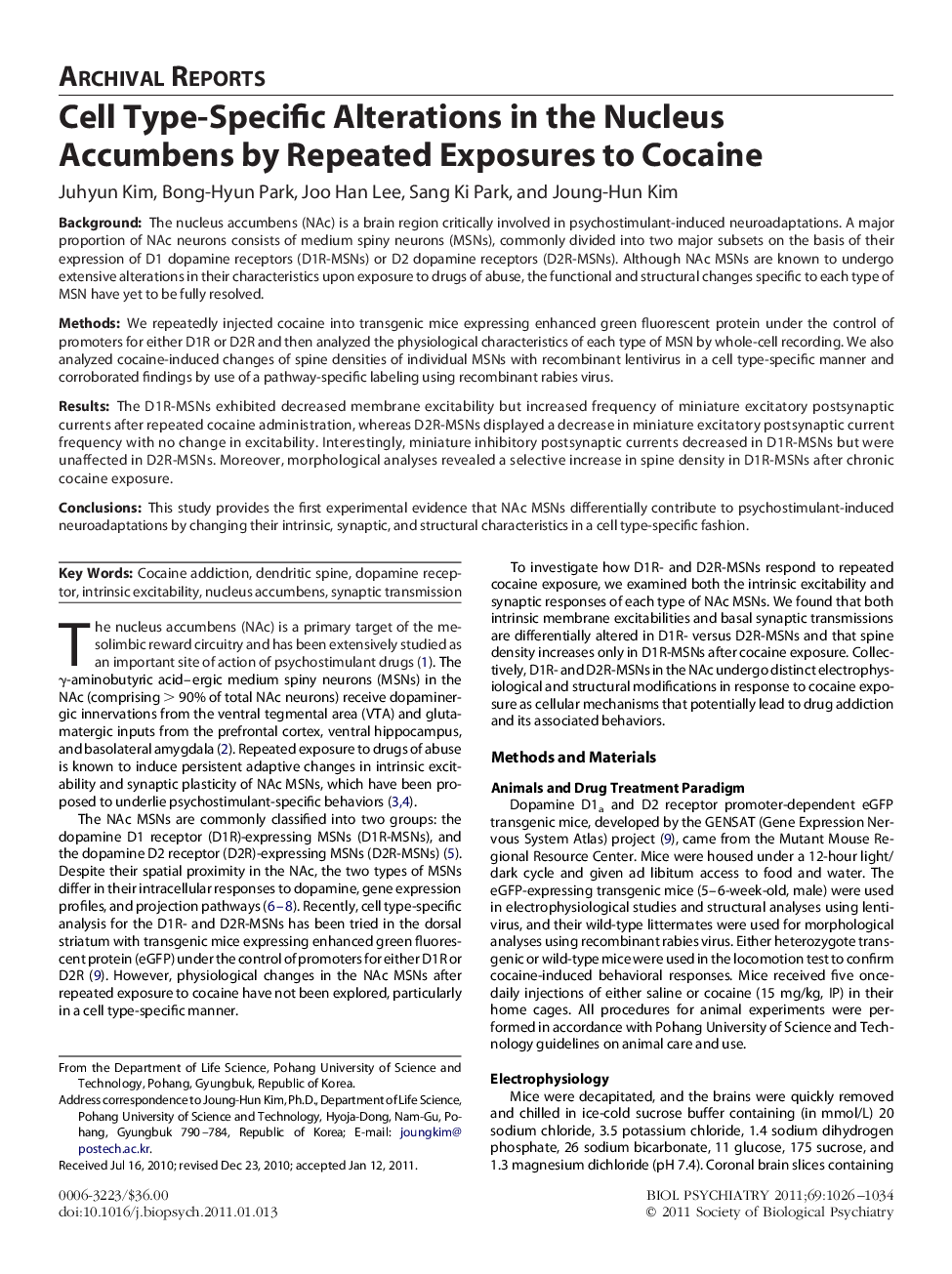| Article ID | Journal | Published Year | Pages | File Type |
|---|---|---|---|---|
| 6227795 | Biological Psychiatry | 2011 | 9 Pages |
BackgroundThe nucleus accumbens (NAc) is a brain region critically involved in psychostimulant-induced neuroadaptations. A major proportion of NAc neurons consists of medium spiny neurons (MSNs), commonly divided into two major subsets on the basis of their expression of D1 dopamine receptors (D1R-MSNs) or D2 dopamine receptors (D2R-MSNs). Although NAc MSNs are known to undergo extensive alterations in their characteristics upon exposure to drugs of abuse, the functional and structural changes specific to each type of MSN have yet to be fully resolved.MethodsWe repeatedly injected cocaine into transgenic mice expressing enhanced green fluorescent protein under the control of promoters for either D1R or D2R and then analyzed the physiological characteristics of each type of MSN by whole-cell recording. We also analyzed cocaine-induced changes of spine densities of individual MSNs with recombinant lentivirus in a cell type-specific manner and corroborated findings by use of a pathway-specific labeling using recombinant rabies virus.ResultsThe D1R-MSNs exhibited decreased membrane excitability but increased frequency of miniature excitatory postsynaptic currents after repeated cocaine administration, whereas D2R-MSNs displayed a decrease in miniature excitatory postsynaptic current frequency with no change in excitability. Interestingly, miniature inhibitory postsynaptic currents decreased in D1R-MSNs but were unaffected in D2R-MSNs. Moreover, morphological analyses revealed a selective increase in spine density in D1R-MSNs after chronic cocaine exposure.ConclusionsThis study provides the first experimental evidence that NAc MSNs differentially contribute to psychostimulant-induced neuroadaptations by changing their intrinsic, synaptic, and structural characteristics in a cell type-specific fashion.
